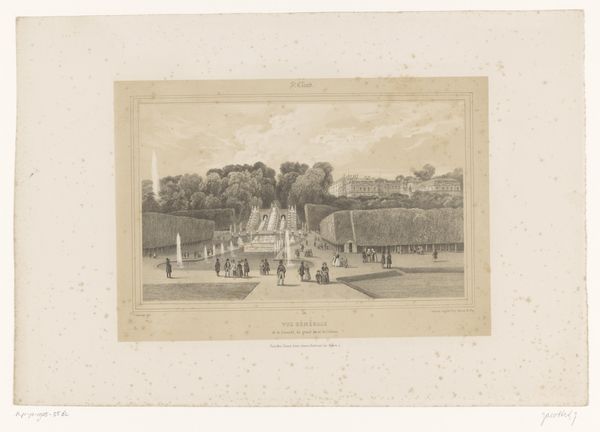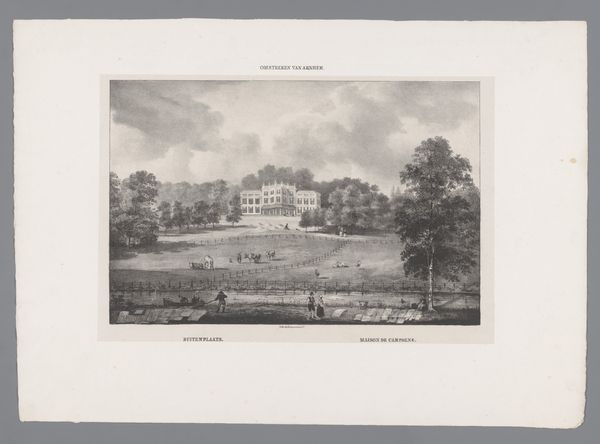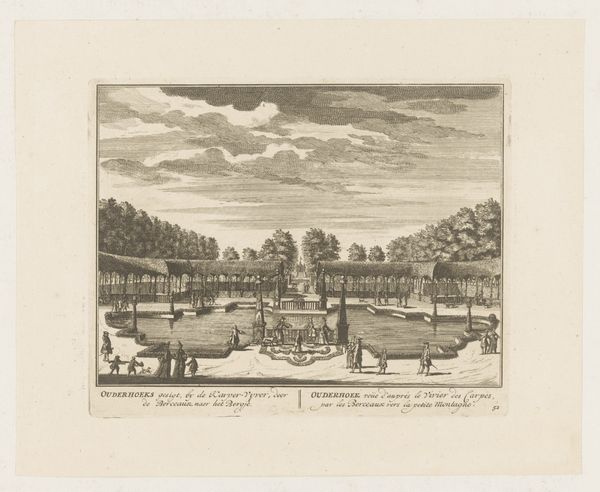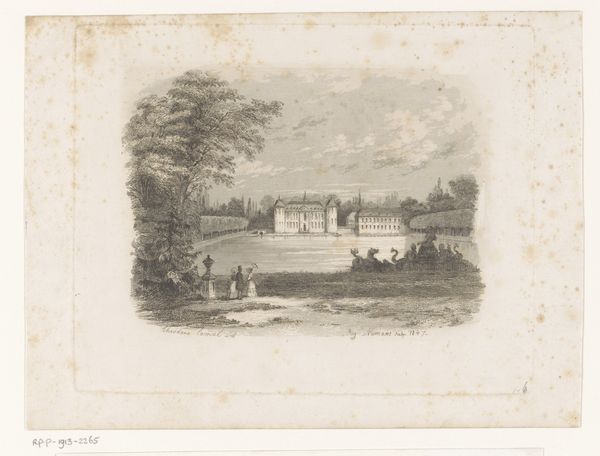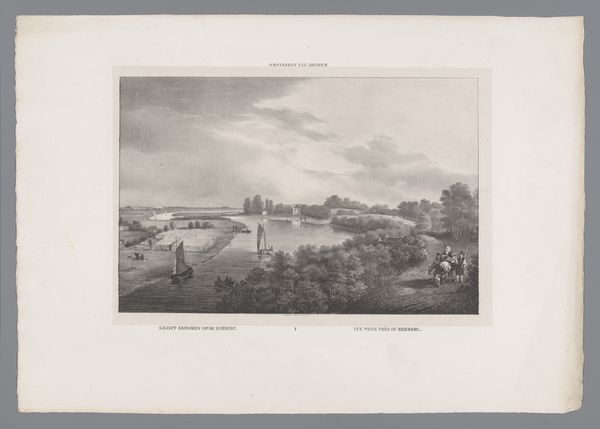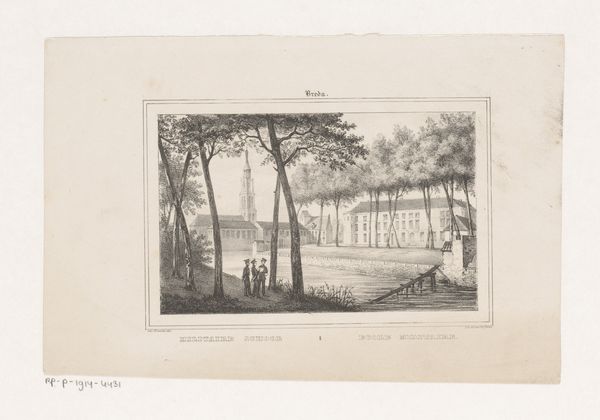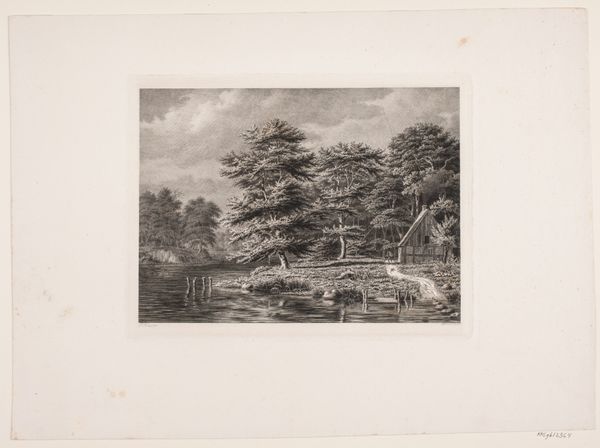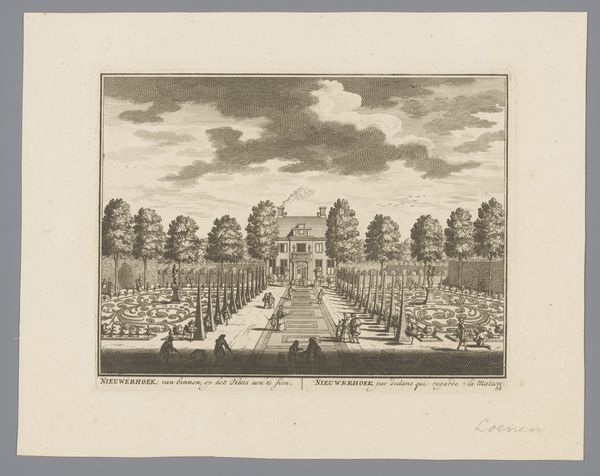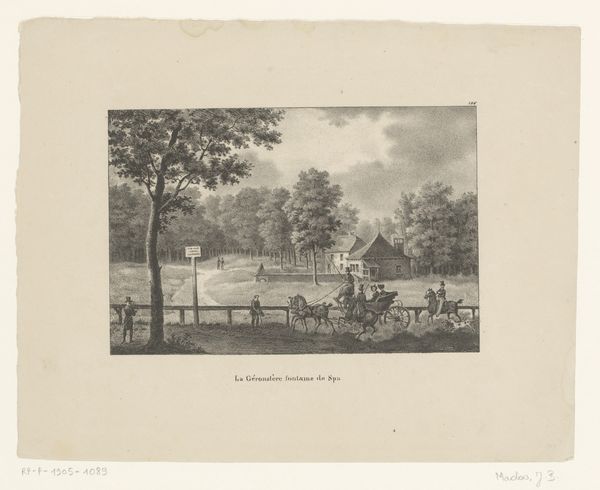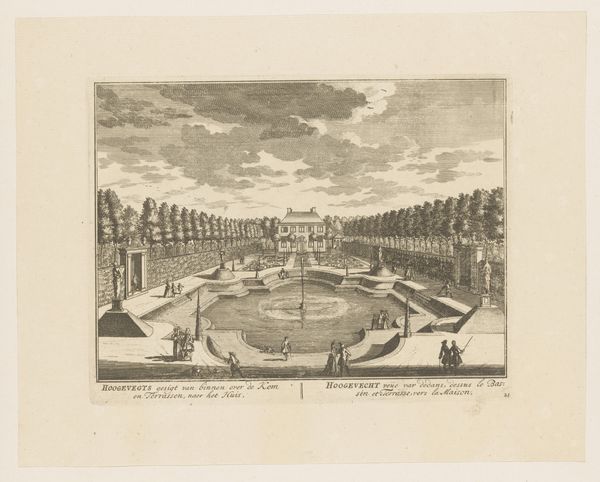
print, engraving
# print
#
landscape
#
perspective
#
romanticism
#
park
#
cityscape
#
engraving
Dimensions: height 416 mm, width 565 mm
Copyright: Rijks Museum: Open Domain
Curator: What an expansive composition. It feels like gazing through a window into another time. Editor: Indeed. We’re looking at “Fontein bij het Château de Saint-Cloud,” or "Fountain at the Chateau de Saint-Cloud," an engraving by Jean-Baptiste Arnout dating from around 1837 to 1843. The work is held here at the Rijksmuseum. Curator: The meticulous details that Arnout achieved through engraving are astounding. Look at how the varying line weights create depth and texture. The perspective pulls us directly into the scene. Editor: It does invite you in, doesn’t it? Saint-Cloud, before its destruction during the Franco-Prussian War, was a vital center of French royal and imperial power. Arnout is not merely depicting a landscape, but subtly promoting the grandeur of the French state and the leisure enjoyed by its upper classes. Notice all the promenading figures and couples leisurely seated by the fountains. Curator: Precisely. There's a dynamic interplay between the rigid geometry of the fountains and the soft, organic forms of the trees. Note how the tonal contrasts create such an ethereal quality in the sky. Editor: And it's not accidental. During this period, representing nature with such romantic undertones, picturesque scenery such as Saint-Cloud was deeply embedded within political symbolism. Views such as this reinforce societal ideals. The formal gardens were extensions of power from the Château. Curator: So true. The arrangement of elements evokes a sense of controlled grandeur, while the figures sprinkled about bring in a needed human scale. There’s a certain elegance inherent in the balance and symmetry, too, wouldn't you say? Editor: Absolutely, but remember who that elegance was for, and how the vision of it was maintained through potentially repressive social and political actions. I think Arnout’s work here serves as both a celebration of design, but also as a complicated depiction of France at the time. Curator: I appreciate how examining this print closely unveils the strategies in manipulating form and light for creating visual order. Editor: I'm struck by how much the site's history shapes our current perception, and influences the arrangement of everything here, even at a fundamental level.
Comments
No comments
Be the first to comment and join the conversation on the ultimate creative platform.
